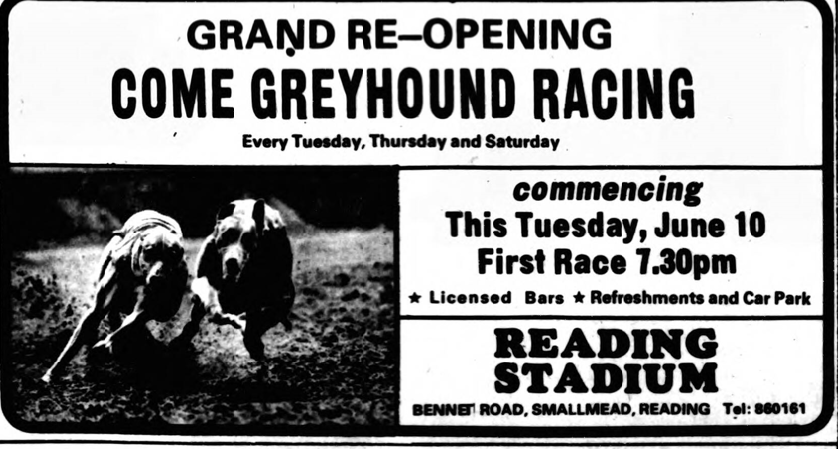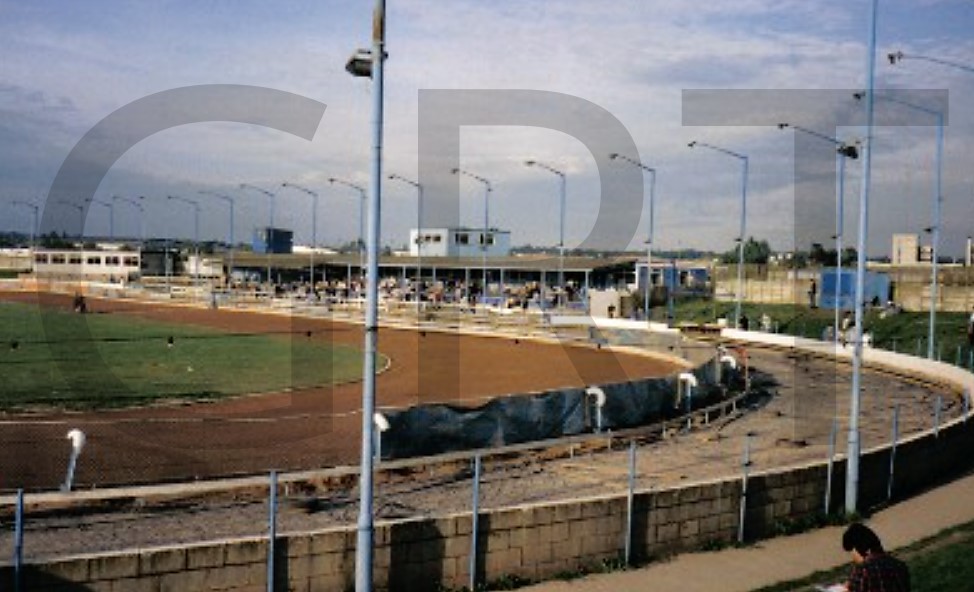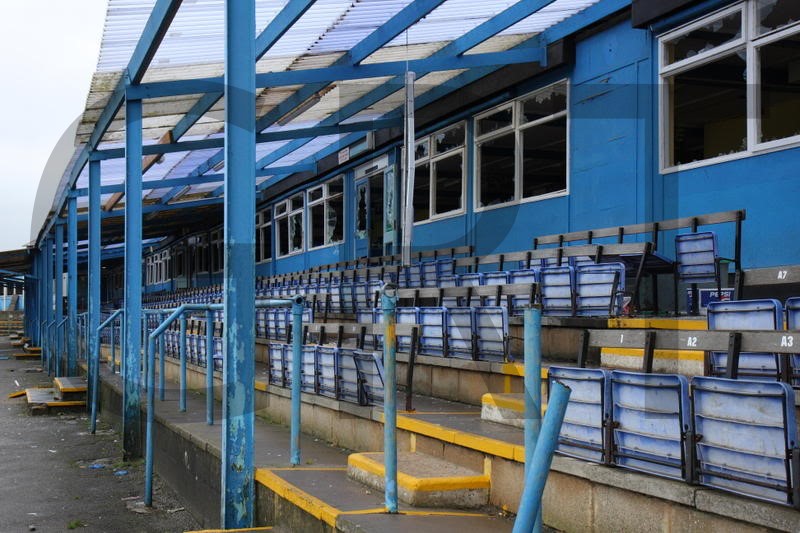Smallmead Stadium, Bennet Road, Smallmead, Reading, Berkshire.
POSTCODE———————————-RG2 OQS
LOCATED————————————Two miles south of Reading town centre, and one mile north east along the A33 just off junction 11 of the M4. Also half mile north of Reading Football Club Stadium.
ORIGINAL SITE—————————–Built on a Landfill site.
DATE CONSTRUCTED——————–1974
DATE VENUE OPENED——————-April 28th 1975 for Speedway.
Meaning other sports may have taken place prior to the arrival of Greyhound Racing.
FIRST MEETING—————————–June 10th 1975.
Greyhound Racing only.
LICENSED OR INDEPENDENT———-NGRC.
All venues covered would have to be licensed with the government, licensed suggested in this section would refer to tracks operating under NGRC Rules.
INSIDE OR OUTSIDE HARE TYPE——Outside Sumner.
Please note that the Electric Hare suggested is only a guidance and would have been in operation for a certain amount of time at this venue. Although it is not necessarily guaranteed that it was operational all the time, as other types of lure may have been used and updated as time progressed.
DISTANCES———————————–275, 465, 660,850 and 1045 metres.
Please note that most racing venues distances had become varied throughout the years, the ones given above were at once point set and offers only a guidance to the track size.
CIRCUMFERENCE—————————385 metres.
Please note that alterations at most racing venues throughout its existence would see that the circumference of the track would vary, the one shown above offers only a guidance to the track size.
BIG RACE NAMES—————————The Reading Masters, The Reading Hunts Cup and The Berkshire Cup.
STADIUM SHARED WITH——————Speedway
LAST MEETING——————————-October 18th 2008.
Greyhound Racing only.
STADIUM CLOSURE DATE—————-October 20th 2008, last meeting for Speedway.
Meaning other sports may have taken place after Greyhound Racing had ceased.
STADIUM DEMOLITION——————-2009
BUILT ON SITE——————————–Nothing known at present.
In some cases, structure’s that originally covered the venue after the stadium had been demolished, may have been themselves demolished too, so the one described is more likely to be the one which now presently covers the site.
EVIDENCE LEFT TODAY——————-Dont know.
FURTHER COMMENTS——————–None
















The Berkshire town of Reading has been associated with two established greyhound stadiums over the years, its first being the Tilehurst Stadium, with the second described in this section as the Smallmead Greyhound Stadium. It was the closure of the Tilehurst Stadium in 1973, that a Greyhound Racing and Speedway Consortium, began to look for a new site to construct a more modern stadium to replace Tilehurst.
After discussions with The Reading Council, a site had been recommended by them to seek planning permission to build a venue on a section of land which had originally been a landfill site, situated in the district of Smallmead close by the busy A33 trunk road. By early 1974 permission was granted to commence construction of The New Smallmead Stadium, with the consortium optimistically predicting that the stadium would be up and running well before the end of the year.
But the early months of construction had unearthed unexpected problems, it was during this period that the building contractors began to realise that the date set for completion could never be achieved. It soon became clear that a number of serious issues had to be overcome, firstly a hump backed bridge that accessed the site was not versatile enough to cope with the large plant machinery needed for construction. Another issue was that the pilings for the larger buildings needed to be sunk as much as 50 feet into the unstable earth below, and with some of the UK’s workforce still operating on a three-day week, that too contributed to slowing things down. These delays had increased the cost of building the stadium, and not only that, but also contributed to the Speedway team having to miss most of the 1974 season.
Eventually things did get under way, with a Speedway meeting opening the stadium on the 28th of April 1975, a crowd of 10,000 showed their loyalty by witnessing the event. It would take a little longer for the arrival of Greyhound Racing, seeing its first meeting staged six weeks later on the 10th of June. The promoters ran six dog events over distances of 275, 465, 660, 850 and 1045 metres, with the hounds chasing an outside Sumner type hare. The greyhound circuit was an all-sand affair having a track circumference of 385 metres. Events took place under NGRC rules, but later did have a trial period of operating under a permit scheme.
In time, stadium regulations vastly reduced the crowd capacity to just 3,500, with a huge parking area for just as many cars. Smallmead did however, invest heavily on attracting the better-quality greyhounds, offering impressive prize money for its top-class races, such as The Reading Hunts Cup, The Berkshire Cup and its most prestigious, The Reading Masters normally run during April, with this event offering almost the best prize money in the UK, bettered only by The English Greyhound Derby.
The beginning of the Millennium had seen a downturn at Smallmead, as the running costs of the stadium had spiralled beyond means, with the stadium losing as much as £4,000 per week. But even more concerning was the large cracks which began to appear on and around some of its buildings, this most certainly caused by the movement of the unstable land that the stadium had been built on.
The stadium was by now in need of heavy investment, but not only that, the council declined to renew its lease, leaving its promoters with no other decision but to cease operations. The greyhounds ran their final meeting on Saturday the 18th of October 2008, and was soon followed by the Speedways finale two days later.
Plans for another new stadium was announced, but nothing ever really materialised. eventually the stadium drifted into a derelict state with all its valuable assets stripped, before the whole site became bulldozed in 2009.
A programme, photograph or even memorabilia for this track is required for this page, if you can help please contact me.

Recent Comments